lecture 6 - Rome
Etruscans
(from East;
non-IndoEuropean language)
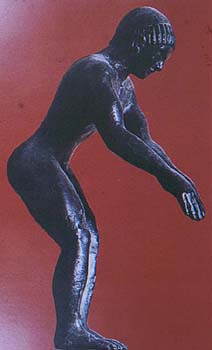
Bronze Diver
Etruscan, 5th Cent. B.C.
The Etruscans influenced early Roman Art with architecture and sculpture:
Greek,
Etruscan, and Roman Antiquities - The Louvre
Etruscan
Art - Visual Arts Cork
Other Latin (or Italian) tribes were also in the region:
Some Ancient Peoples
of Southern Italy - Naples: Life, Death & Miracles
Latins
(Italic Tribe) - Wikipedia
Future site of Rome settled, according to both to legend & recent
discovery, about 753 B.C. (mud huts, thatch huts)
Kingship overthrown; evolves into rule by Patrician class, eventually
their descendants becoming the Senate.
Concept of regional citizen - 1st Kings of Rome were probably Etruscan;
citizens could change domicile without penalty.
Republic - 509 BC
Senatorial government established.
Art influenced by Greek colonies in Italy.
'Unification' of Italy - c. 350 - 275 BC; Punic Wars (against
Carthage) 264 - 201 B.C.
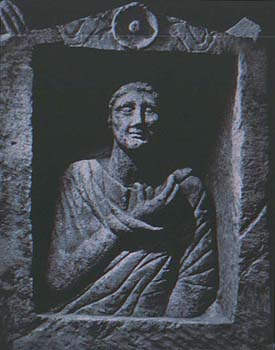
Funerary stele - 2nd - 1st cent. B.C.
Greece subjugated by 146 B.C. (Greco-Roman period)
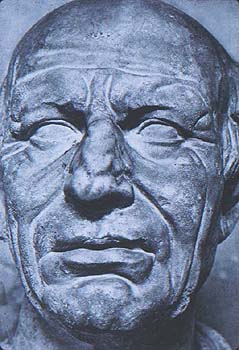
Head of a man in 'pitiless realism' style
Republic, 1st cent. B.C. |
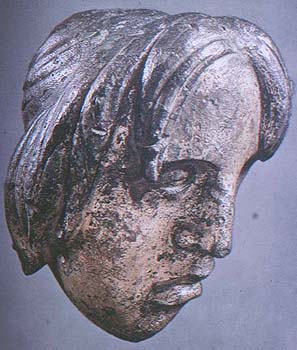
Head of Female Northern Barbarian, Gallo-Roman
Gilded Bronze, 15cm. height, 1st cent. B.C.
Gallo-Roman
France - Destinations France
|
The Roman portrait artist was highly skilled in portraying personality
traits -
including flaws such as incompetence or arrogance. This period cannot
be said to be strictly idealized,
although art was also used as an element of statecraft or 'propaganda'.
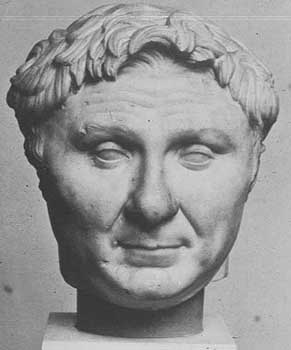
Portrait of Pompey, c. 55 BC
His portrait expresses both vacillation & good nature
|
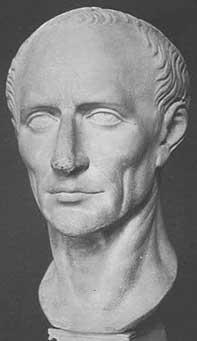
Julius Caesar, assassinated 44 BC
|
Empire - 27 BC
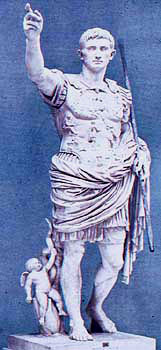
'Emperorship' established
'Augustus', great nephew of Caesar, appointed by Senate.
This sculpture of him from 20 B.C.; 6' 8"
Augustus
Prima-Porta - The Vatican
79 AD - Pompeii Destroyed; wall paintings survive
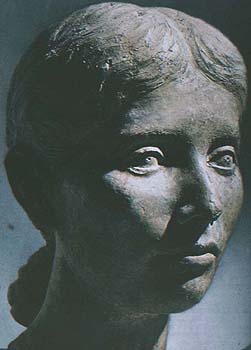
Portrait of a Girl - 1st century A.D. - terra cotta
c. 98 - 136 A.D. - Buildings of Trajan and Hadrian.
Discussion: Column of Trajan; the Pantheon.
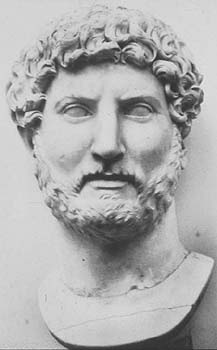
Hadrian (patron of the arts) |
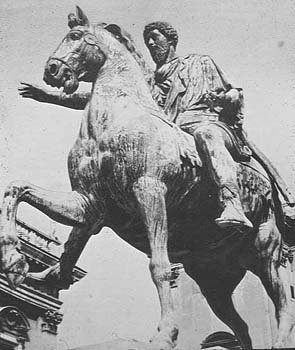
Marcus Aurelius - Equestrian statue, c. 175 A.D.
|
|
|
235 - 284 A.D. 'Barracks' Emperors
The
Barracks Emperors - Jay's Roman History
|
|
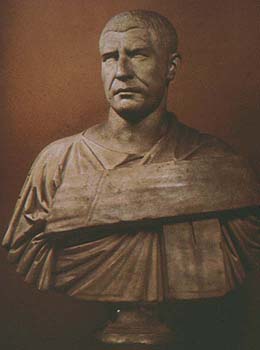
Philip the Arab c. 204 - 249 A.D.
His portrait expresses his insecurity, c. 250 AD
Philip
the Arab - Ancient History Encyclopedia
Philip
the Arab - Wikipedia
|
285 A.D. - Diocletian introduced the system of Tetrarchs - divided
rule to help govern and stabilize accession in the huge empire.
There were two co-emperors (Augusti), and two Caesars, who replaced
the Augusti upon their death.
The sculpture below indicates the instability of the sprawling empire
as the two Augusti shoulder each other for support.
Tetrarchy
- Livius.org
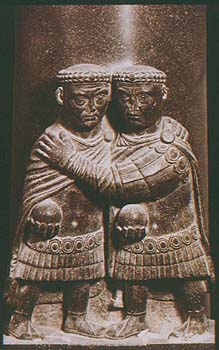
Tetrarchs sculpture - 305 A.D.
The Tetrarchs Diocletian and Maximian (Above).
The Portrait of
the Four Tetrarchs - Rome Across Europe
Portrait
of the Four Tetrarchs - Wikipedia
Constantine - originally a tetrarch - unified rule again
in 324 A.D.
312 - Constantine's successful battle against Maxentius ('Maximian')
- led to the conversion of Constantine to Christianity.
The
Late Roman Counter-Revolution: Diocletian, the Tetrarchy and Constantine
- erenow.com
Constantine
the Great and the Impact of His Sole Rule - Neo Byzantium
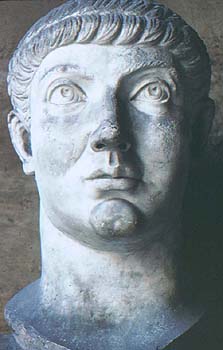
Giant sculpture of Constantine:
head & fragments survive. 315-30 A.D.
Colossal
statue of Constantine- Bluffton University
330 A.D. - transfer of capital from Rome to Constantinople.
After his death, Constantine divided the empire among his sons.
Home | Lecture
1 | Lecture 2
| Lecture 3 | Lecture
4 | Lecture 5
| Lecture 7
